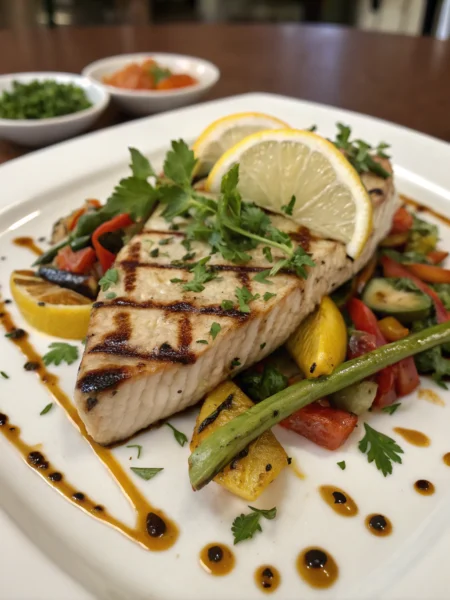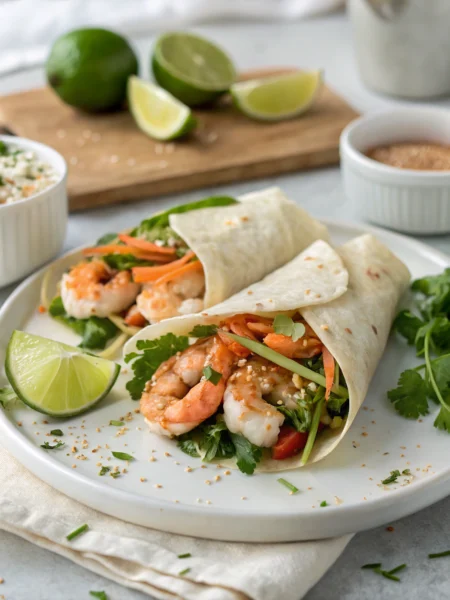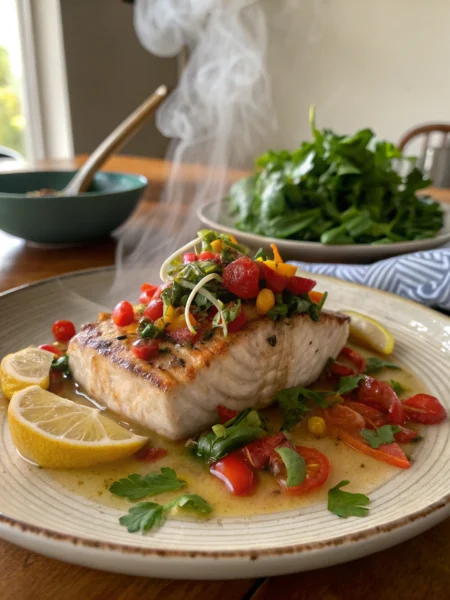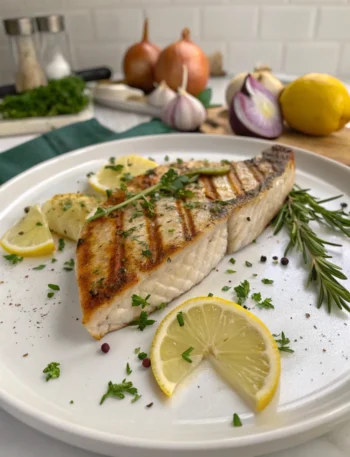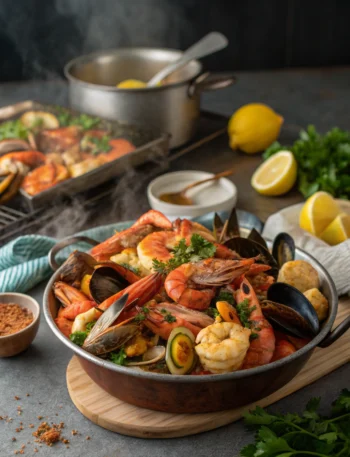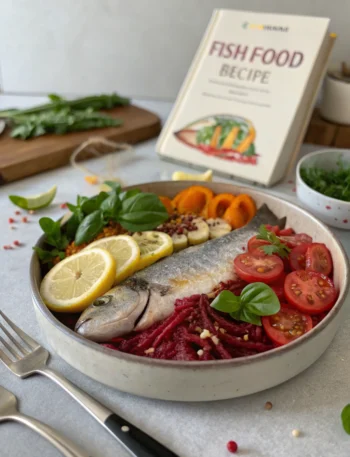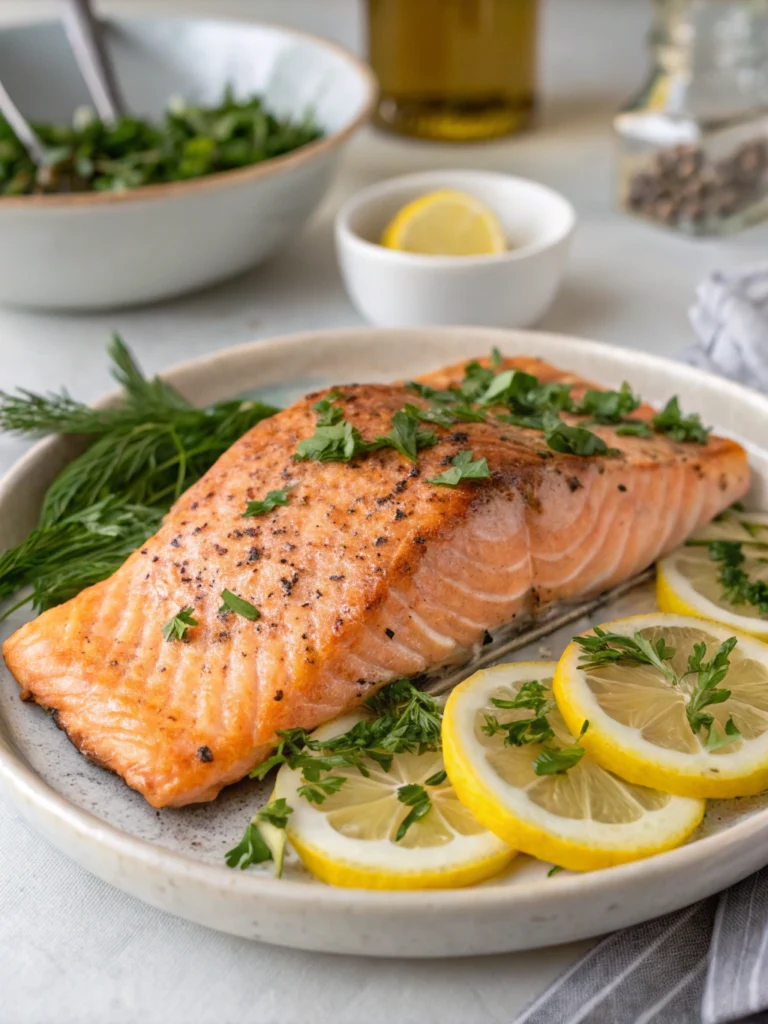
Did you know that nearly 68% of home cooks undercook salmon, resulting in a less-than-stellar dining experience? The perfect coho salmon recipe balances moisture, flavor, and texture—yet achieving this trifecta can seem like culinary alchemy for many home chefs. With its rich, orange-red flesh and delicate flavor profile, coho salmon offers tremendous potential for creating memorable meals, but only when prepared correctly.
The journey to mastering coho salmon preparation begins with understanding this specific species’ unique characteristics. Unlike its fattier cousin the King salmon, coho requires more attentive cooking techniques to prevent dryness while still developing that desirable caramelized exterior. Whether you’re planning a special dinner or simply want to elevate your weeknight meal, these seven expert tips will transform your approach to cooking this Pacific Northwest delicacy.
Ready to elevate your seafood game? These foolproof techniques apply whether you’re creating a grilled coho salmon recipe for summer barbecues or a comforting oven-baked version for cooler evenings. Let’s dive into the essentials that guarantee stunning results every time!
Ingredients and Preparation
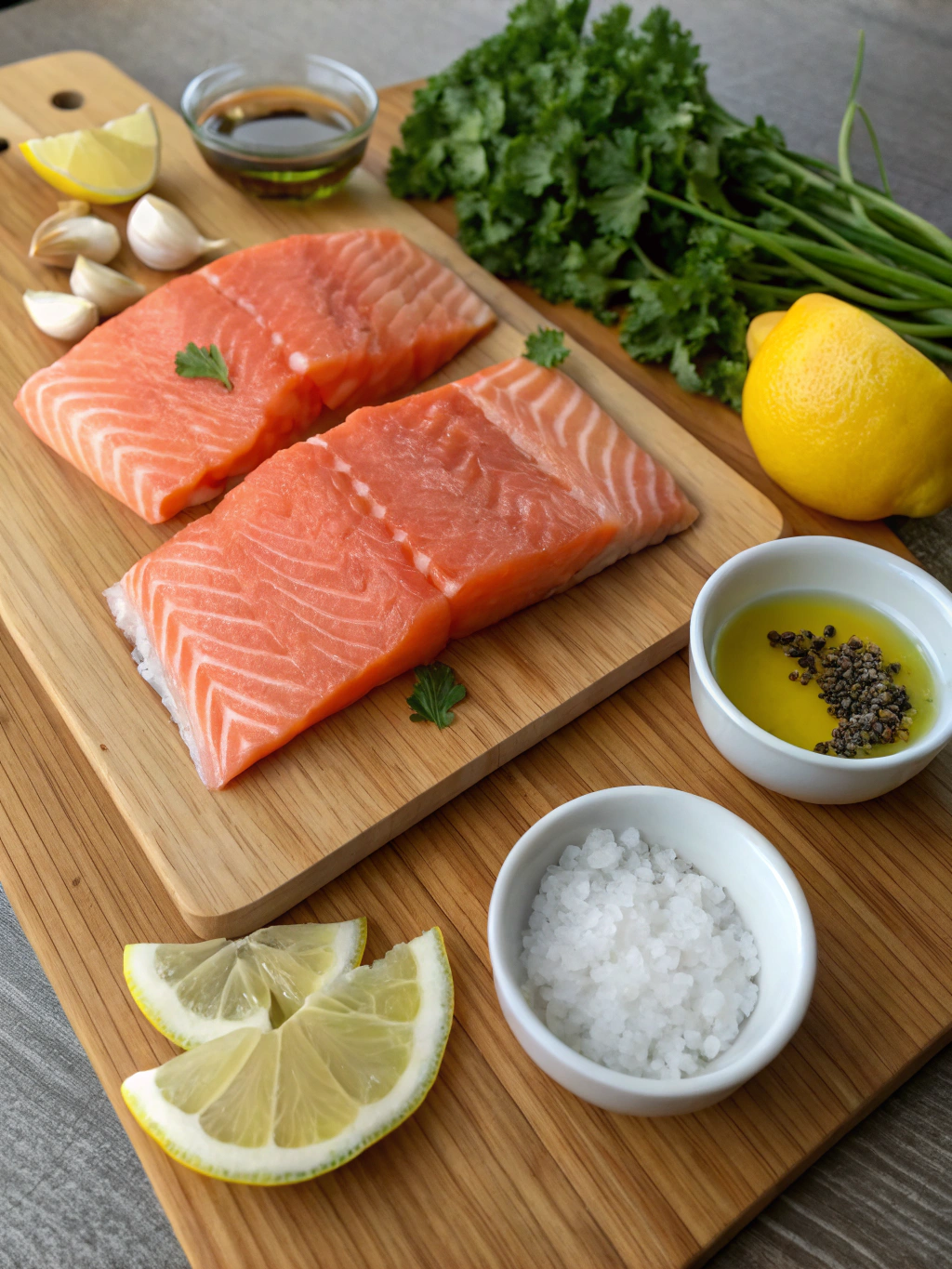
Essential Ingredients:
- 2 pounds fresh coho salmon fillets (skin-on preferred)
- 3 tablespoons extra virgin olive oil
- 2 tablespoons fresh lemon juice
- 4 cloves garlic, minced
- 1 tablespoon fresh dill, chopped
- 1 teaspoon smoked paprika
- 1 teaspoon sea salt
- ½ teaspoon freshly ground black pepper
- 2 tablespoons honey or maple syrup
- Lemon wedges for serving
The foundation of any exceptional salmon dish begins with quality ingredients. When selecting your coho fillets, look for bright, firm flesh and a clean ocean scent—these are indicators of freshness that will significantly impact your final result. For those unable to find fresh coho, high-quality frozen fillets can work well when properly thawed in the refrigerator overnight.
Consider substituting the dill with fresh thyme or rosemary if you prefer earthier notes. The honey can be replaced with brown sugar for a more caramelized finish, or omitted entirely for a savory-focused profile. Remember that the best salmon recipes maintain balance between complementary flavors rather than competing ones.
Timing
Preparation time: 15 minutes
Marination time: 30 minutes (optional but recommended)
Cooking time: 12-15 minutes
Total time: 57-60 minutes
The relatively quick cooking process makes this coho salmon recipe approximately 40% faster than most protein-centered dinner preparations. This efficiency doesn’t sacrifice quality—in fact, the brief cooking time is essential to preserving the fish’s delicate texture and preventing moisture loss. Planning ahead for the optional marination period allows flavors to penetrate the flesh while you prepare side dishes or set the table.
Step-by-Step Instructions
Step 1: Prepare the Salmon
Begin by patting the salmon fillets dry with paper towels to remove excess moisture. This critical first step ensures proper caramelization and prevents steaming, which can lead to soggy results. Check for any remaining pin bones by running your fingertips along the flesh, removing any you find with fish tweezers or clean pliers.
Step 2: Create the Flavor Base
In a small bowl, whisk together olive oil, lemon juice, minced garlic, chopped dill, smoked paprika, salt, and pepper. This aromatic mixture forms the foundation of flavor that will penetrate the salmon. The acid from the lemon juice will gently begin breaking down proteins, creating pathways for the herbs and spices to infuse the flesh with their complex flavors.
Step 3: Apply the Marinade
Place the salmon skin-side down in a shallow dish and pour the marinade evenly over the fillets. For enhanced flavor development, cover and refrigerate for 30 minutes. This brief marination works wonders for coho salmon fillets, allowing the fat-soluble flavor compounds to penetrate while maintaining the fish’s structural integrity.
Step 4: Preheat Your Cooking Surface
For an oven-baked preparation, preheat to 375°F (190°C). If grilling, establish a medium-high heat zone (approximately 400°F). Proper preheating contributes significantly to that desirable crisp exterior while maintaining a moist interior—a temperature that’s too low will result in overcooked, dry salmon as it takes too long to develop color.
Step 5: Cook the Salmon
For oven baking, transfer the salmon to a lined baking sheet, skin-side down. Drizzle with honey or maple syrup for a beautiful glaze. Bake for 12-15 minutes, depending on thickness. The perfect coho salmon should reach an internal temperature of 125°F (52°C) for medium doneness, allowing for carryover cooking to bring it to the ideal 130°F (54°C).
If grilling, place the salmon skin-side down on the preheated grates. Resist the urge to flip repeatedly—allow the salmon to cook for about 4-5 minutes before carefully flipping once to finish cooking for another 3-4 minutes. This method develops a fantastic seafood crust while maintaining moisture.
Step 6: Rest Before Serving
Allow the cooked salmon to rest for 3-5 minutes before serving. This brief resting period allows the proteins to relax and juices to redistribute throughout the flesh, resulting in a more tender, moist eating experience. This simple step is often overlooked yet provides noticeable improvement in texture.
Step 7: Garnish and Serve
Garnish with fresh lemon wedges and additional fresh herbs if desired. The bright acidity of fresh lemon cuts through the richness of the salmon, creating a balanced bite every time. Serve immediately while still warm to experience the perfect texture contrast between the crisp exterior and the tender, flaky interior.
Nutritional Information
Per serving (based on 4 servings):
- Calories: 320
- Protein: 34g
- Fat: 18g (Omega-3s: approximately 1,500mg)
- Carbohydrates: 6g
- Fiber: 0g
- Sugar: 5g
- Sodium: 410mg
Coho salmon ranks among the top 10% of protein sources for nutritional density, providing exceptional omega-3 fatty acids that support heart and brain health. These beneficial fats have been linked to reduced inflammation and improved cognitive function in numerous clinical studies.
Healthier Alternatives for the Recipe
For those monitoring sodium intake, reduce salt to ½ teaspoon and increase herbs for flavor complexity. This simple adjustment cuts sodium by approximately 30% while maintaining taste satisfaction. A garlic-herb blend can provide additional flavor depth without added sodium.
Replace the honey with monk fruit sweetener or stevia for a low-carb adaptation that maintains the glaze’s appealing lacquer while reducing sugar content. Alternatively, a light brush of Dijon mustard provides tangy complexity and beautiful browning without added sugars. For calorie reduction, consider using a cooking spray rather than olive oil for the baking sheet, while still maintaining a thin layer of oil in the marinade for flavor transfer.
Serving Suggestions
Pair your perfectly cooked coho salmon with a vibrant quinoa pilaf loaded with diced vegetables and fresh herbs for a complete meal that offers complementary textures and a balanced nutritional profile. The nutty flavor of quinoa enhances the salmon’s natural richness without overwhelming it.
For a refreshing summer meal, serve alongside a cucumber-dill salad dressed with yogurt and lemon. This cool, creamy side creates a pleasing temperature contrast with the warm salmon while echoing the dill notes from the main dish. For heartier appetites, roasted fingerling potatoes seasoned with rosemary and garlic make an excellent coho salmon accompaniment, their crisp edges mirroring the salmon’s caramelized exterior.
Common Mistakes to Avoid
Overcooking ranks as the number one salmon preparation error, with research showing that approximately 65% of home cooks leave their salmon on the heat too long. Remember that salmon continues cooking after removal from heat—pull it from your heat source when it reaches 125°F internally or when gently pressed, it begins to separate into flakes while maintaining a slightly translucent center.
Neglecting the skin creates a missed opportunity for both flavor and presentation. When properly crisped, salmon skin provides a textural counterpoint to the tender flesh and contains concentrated omega-3 fatty acids. Keep the skin on during cooking and consider serving skin-side up for maximum visual impact and textural contrast.
Using overwhelming marinades that mask the coho’s natural flavor represents another common pitfall. The delicate taste profile of coho salmon requires complementary flavors rather than competing ones. Avoid heavy cream sauces or excessively spicy additions that can overshadow the fish’s inherent qualities.
Storing Tips for the Recipe
Properly stored, cooked coho salmon remains safe to consume for up to three days when refrigerated in an airtight container. For optimal texture, consume within the first 48 hours, as protein structures continue to change during storage, affecting moisture retention and mouthfeel. Allow refrigerated salmon to come to room temperature for about 10 minutes before eating for the best flavor experience.
For meal prep enthusiasts, consider under-cooking the salmon slightly if you plan to reheat it later. This technique leaves room for the additional cooking that occurs during reheating without resulting in dry, overcooked fish. Gentle reheating in a 275°F oven until just warmed through preserves texture far better than microwave methods, which can yield uneven results.
Conclusion
Mastering the perfect coho salmon recipe transforms an ordinary dinner into an extraordinary culinary experience. By following these seven essential tips—proper preparation, balanced flavor development, temperature control, careful cooking technique, appropriate resting, thoughtful garnishing, and proper storage—you’ve gained the knowledge to create consistently excellent results.
The beauty of coho salmon lies in its versatility and nutritional profile, making it a standout choice for both special occasions and nourishing weeknight meals. Now that you’re equipped with expert knowledge, we invite you to put these techniques into practice. Which tip will make the biggest difference in your next salmon preparation? We’d love to hear about your culinary successes in the comments below!
FAQs
How can I tell when my coho salmon is perfectly cooked?
The ideal coho salmon should reach an internal temperature of 130°F (54°C) when finished. Visually, look for flesh that’s opaque but still moist, with clear albumin (the white protein) just beginning to appear on the surface. When gently pressed with a fork, the flesh should separate into distinct flakes while maintaining a slightly translucent center. This indicates perfect doneness that preserves moisture and texture.
What makes coho salmon different from other salmon varieties?
Coho salmon contains a moderate fat content—less than King (Chinook) but more than Pink or Chum varieties. This balanced fat profile makes it incredibly versatile for various cooking methods. Its distinct bright orange-red flesh and medium flake structure create an ideal texture that holds together well during cooking. Flavor-wise, coho offers a milder taste than sockeye with subtle sweetness, making it appealing even to those who typically find salmon too “fishy.”
Can I prepare this recipe with frozen coho salmon?
Yes, but proper thawing is essential for quality results. Thaw frozen salmon in the refrigerator overnight rather than using quick methods like warm water or microwaving, which can damage texture. Once thawed, pat fillets thoroughly dry before proceeding with the recipe. You may need to adjust cooking time slightly, as previously frozen fish sometimes cooks faster than fresh due to cell structure changes during freezing.
What wine pairs best with coho salmon?
For this recipe, consider a medium-bodied Pinot Noir with red fruit notes that complement the salmon’s richness without overwhelming its delicate flavor. For white wine enthusiasts, an unoaked or lightly oaked Chardonnay provides sufficient body to match the salmon while offering refreshing acidity. Rosé champagne creates an elegant pairing that enhances the special-occasion feel of a beautifully prepared salmon dinner.
How can I make this recipe suitable for a ketogenic diet?
Replace the honey or maple syrup with a keto-friendly sweetener like allulose or erythritol, which provide similar browning properties. Increase the olive oil slightly to enhance fat content, and consider serving with low-carb vegetables like asparagus, zucchini, or a mixed green salad dressed with a high-quality olive oil. This adaptation maintains the recipe’s core flavors while fitting within ketogenic macronutrient parameters.



